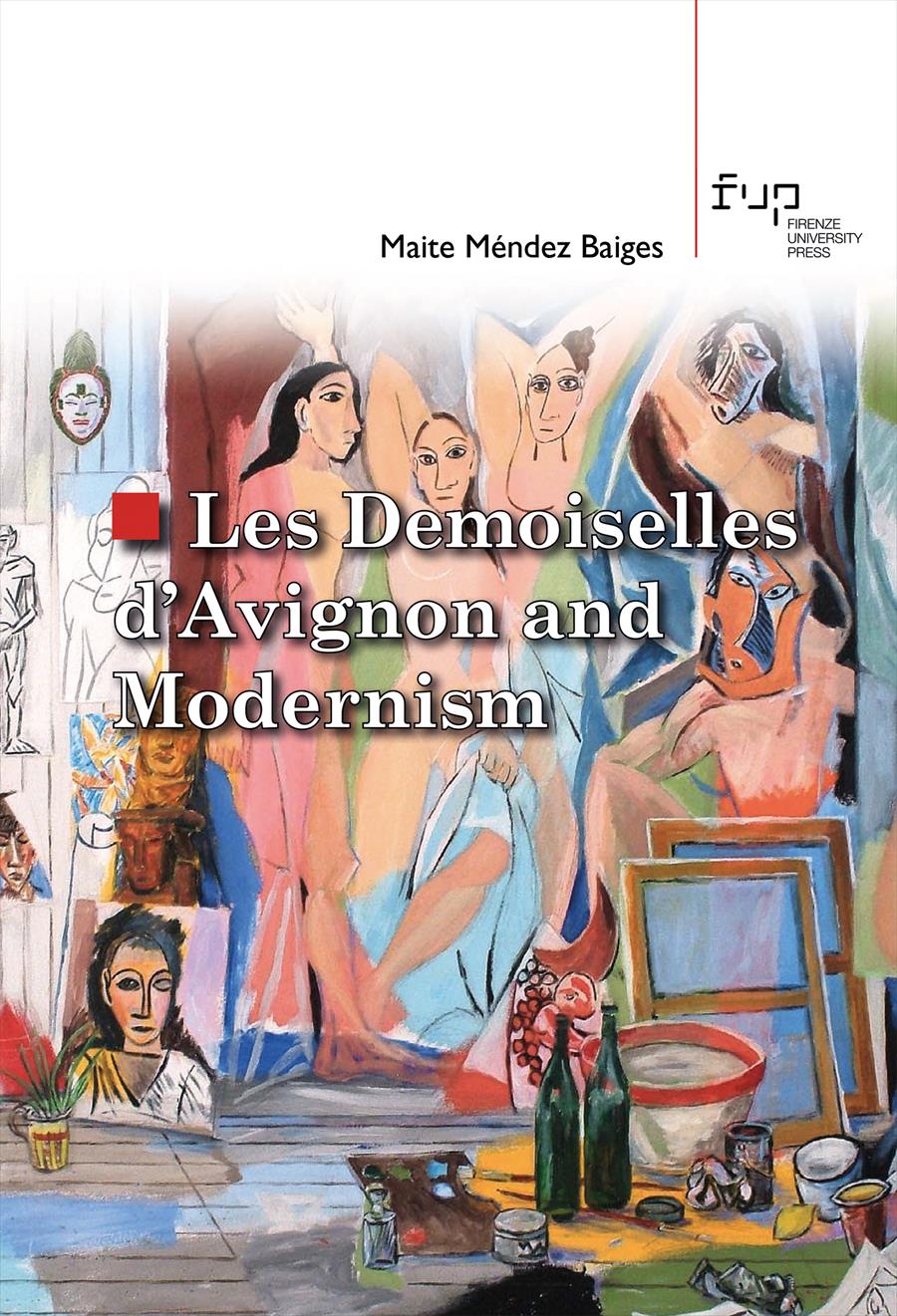- Les Demoiselles d’Avignon and Modernism
- Maite Méndez Baiges
Introduction. An Archaeology of Modernism
- Maite Méndez Baiges
- © 2022 Author(s) |
- CC BY 4.0
- DOI: 10.36253/978-88-5518-656-8.02
The book meticulously analyses the history of the critical reception of avantguard art through the interpretations received by one of its greatest emblems, Les Demoiselles d'Avignon by Picasso, 1907. Since Les Demoiselles has been considered over this century the true paradigm of Modern Art, this book is, fundamentally, a sort of synthesis of the discourses about Modernism from formalism, iconology, Leo Steinberg's 'Other Criteria’, sociological, the biographical and psychoanalytical theses, cultural and historicist and lastly, the impact of post-structuralism and the feminist, post-colonialist and transnational interpretations. The final chapter deals with the artistic versions of Les Demoiselles d'Avignon made by artists. It is an essay on the different versions and identities of Modern Art and Modernism that have been produced throughout the last century.
- Keywords:
- Modernism,
- Demoiselles d'Avignon,
- Modernist Criticism,
- New History of Art,
- Global History of Art,
University of Malaga, Spain - ORCID: 0000-0002-0762-7004
- Appadurai, Arjun. 1986. The Social Life of Things. Cambridge: Cambridge University Press.
- Bal, Mieke. 1999. Quoting Caravaggio: Contemporary Art. Chicago: Preposterous History and Chicago University Press.
- Chamananda Ngozi, Adichie. 2018. “El silencio es un lujo que no podemos permitirnos.” El País. 27 October, 2018.
- Débray, Regis. 1994. Vida y muerte de la imagen. Historia de la mirada en Occidente. Translated by Ramón Hervás. Barcelona: Paidós.
- D’Souza, Aruna. 2002. “Biography becomes Form: William Rubin, Pablo Picasso and the Subject of Art History.” Word & Image, 18, no. 2 (April-June): 126–36. DOI: 10.1080/02666286.2002.10404983
- Golding, John. 2001. “Les Demoiselles d’Avignon and the Exhibition of 1988.” In Picasso’s Les Demoiselles d’Avignon, edited by Christopher Green, 15–30. Cambridge: Cambridge University Press.
- Harris, Jonathan. 2001. The New Art History. A Critical Introduction. London and New York: Routledge.
- Irigaray, Luce. 1978. “Un art différent de sentir, interview to Luce Irigaray”. In Les femmes, la pornographie, l’erotisme, edited by Marie Françoise Hans and Gilles Lapouge, 43–58. Seuil: Paris.
- Joyeux Prunel, Béatrice. 2015. Les avant-gardes artistiques. 1848-1918. Une histoire transnationale. Paris: Gallimard.
- Owens, Craig. 1983. The Discourse of Others: Feminists and Postmodernism. In The Anti-Aesthetic. Essays on Postmodern Culture, edited by Hal Foster, 57-82. Seattle: Bay Press.
- Rubin, William, et al. 1994. “Les Demoiselles d’Avignon.” Studies in Modern Art 3: New York: Museum of Modern Art.
Chapter Information
Chapter Title
Introduction. An Archaeology of Modernism
Authors
Maite Méndez Baiges
Language
English
DOI
10.36253/978-88-5518-656-8.02
Peer Reviewed
Publication Year
2022
Copyright Information
© 2022 Author(s)
Content License
Metadata License
Bibliographic Information
Book Title
Les Demoiselles d’Avignon and Modernism
Authors
Maite Méndez Baiges
Peer Reviewed
Number of Pages
148
Publication Year
2022
Copyright Information
© 2022 Author(s)
Content License
Metadata License
Publisher Name
Firenze University Press
DOI
10.36253/978-88-5518-656-8
ISBN Print
978-88-5518-655-1
eISBN (pdf)
978-88-5518-656-8
eISBN (epub)
978-88-5518-657-5
Series Title
Studi e saggi
Series ISSN
2704-6478
Series E-ISSN
2704-5919
